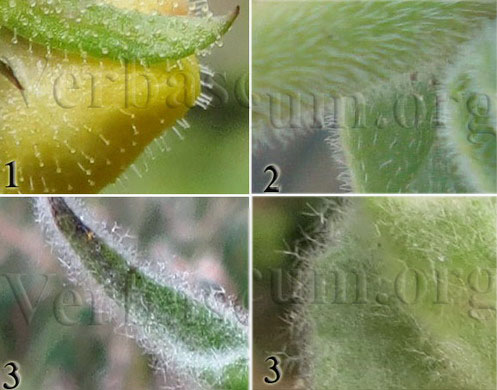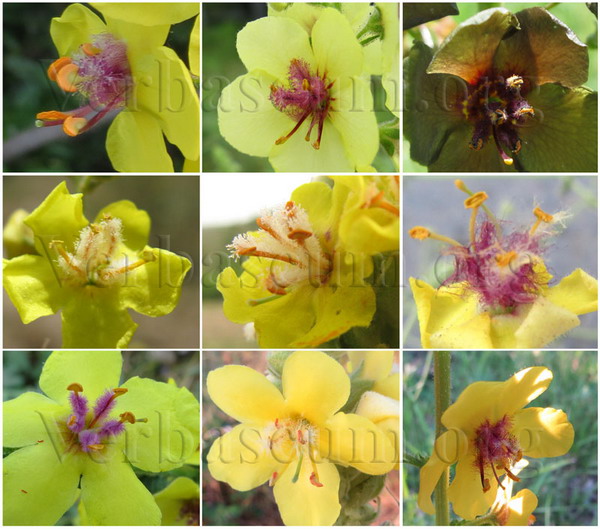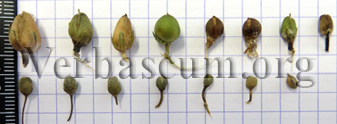First, it’s better to know the Scrophulariaceae (Foxglove) family:
herbaceous plants, shrubs or rarely trees. Stem: round to square, Leaves opposite or alternate. Irregular flowers in spikes or clusters, sometimes solitary, bracts present. Calyx lobes 4-5, sometimes two lips. corolla 5-lobed or two well defined lips. 2-4, sometimes 5 stamens. Style alone. Ovary superior, 2-boxes. Fruit: capsule often bipartisan.
3000 species in 220 genera common almost everywhere in the world, mainly north temperate. Differs from the Labiatae capsule friut and often alternate leaves.
Scrophulariaceae is divided to three subfamilies based on corolla lobes and arrangement of leaves:
1- Verbascoideae, 2- Scrophularioideae, 3- Rhinanthoideae
General Morphology of Verbacum:
Verbascum genus is a complex kind, rich species with about 360 species (and many hybrids) in the world, so only the main ones are described. These plants are usually:
Herbaceous,
Habit: annual (rarely), biennial, or perennial (monocarpic), 0.5 to 3 m height.
Stems: erect; glabrous, puberulent, hirsute, tomentose; sometimes glabrescent, glandular or eglandular; rounded or angular.
Hairs: Three main different types: 1. glandular hairs (stipitate or sessile); 2. Simple hairs (un-branched, non-glandular covering); 3. different type of branched and/or stellate covering hairs.
These types of hairs can be appear alone or together in one species.

Leaves: often with large rosettes of basal leaves, stem leaves alternate (very rarely opposite), entire, often toothed, sinuated, crenate, or various lobes;
Petiole: present or absent.
The upper leaves are smaller, simpler in form and sessile and in some species, decurrent on the stem. The stem leaves are usually relatively wider than the other, acute; and for some, narrower and acute.
The hairs on the leaves show significant differences. They can have simple, glandular, branched hairs or glabrous, pubescent or dense tomentose.
Pedicels: present, sometimes reduced or absent; bracteoles present or absent.
Inflorescence: in spikes or panicles.
Flowers: in cymes (rarely reduced to single flowers) in axils of leaf-like or reduced bracts. (the flower size (Diam.) varies from 20 to 55mm)
Corolla: yellow, white, orange or sometimes purple, tube very short, five wide spreading lobes.
Stamens: 5 (sometimes 4 fertile and 1 staminode) or 4 (previously it was known as genus Celsia). Filaments are usually villous (white, yellow, purple).

Different types of flower in Verbascum:
Colours, stamens, anthers (reniform, medifixed, decurrent) and filaments (hairy, glabrous, hairy up to anther, glabrous near apex)
Calyx: with 5 equal lobes, linear-oblong to elliptic or triangular.
Gynoecium: Style filliform or thickened above. Ovary bilocular, generally with many ovules.
Fruit: globose capsule, symmetric, ovoid to elliptic-ovoid, broadly elliptic, ovoid-globose, or subglobose.

Verbascum Capsules
Seeds: small, usually with five transverse rows of pits.
